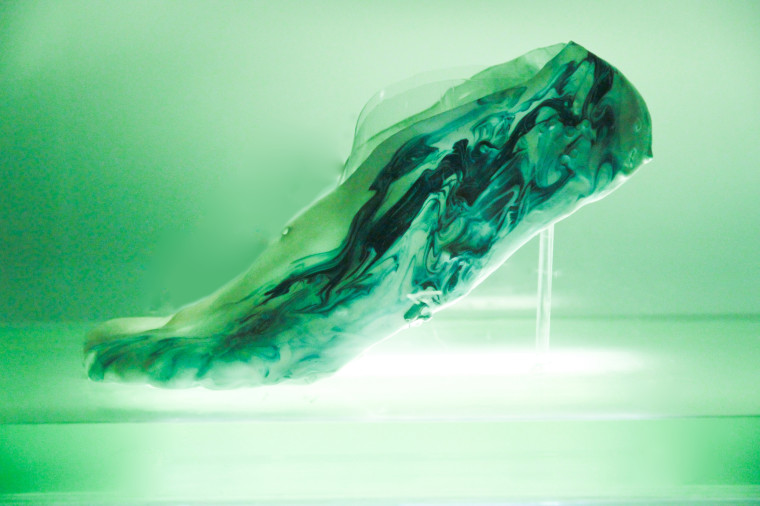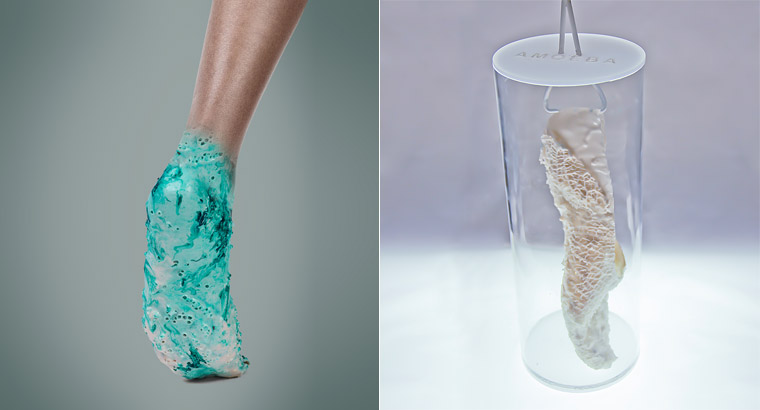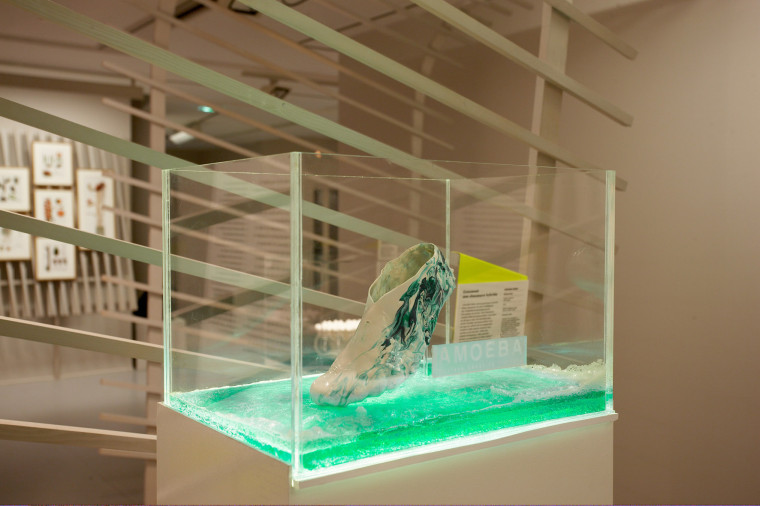To make a shoe with protocells
Amoeba Shoe

Shamees Aden
The ‘Amoeba’ surface-adapting trainer is a conceptual prototype that seeks to probe the future of new materials derived from protocells. The study of protocells is a new and emerging science that has the potential to drastically revolutionise the way we make materials. Essentially, protocells blur the gap between the non-living and the living. Engineering the emergence of life from lifeless liquid chemicals manufactured artificially in the laboratory could provide the building blocks to create a new man-made nature.

The protocell synchronises to the individual foot, adapting in real time to the current activity of the runner by adding extra support in high impact areas.
The ‘Amoeba’ surface-adapting trainer proposes to use 3D printed biotechnology to create a second protocell skin around the wearer’s foot. The effect for the athlete is that the protocell synchronises to the individual foot because this living technology is responsive and reconfigurable, adapting in real time to the current activity of the runner by adding extra support in high impact areas.
Shamees Aden is inspired by how science could revolutionise future fabrication, and is particularly interested in the chemical make up of materials. What makes a material be in a fix or active state? Could modern materials be engineered to be living, engaging more extensively with the natural world? Can we engineer living systems that would be in constants conversations with their surroundings, enabling them to react, respond and adapt in real time? Shamees believes that we are on the cusp of a material revolution led by emerging living technologies. Science is becoming the future designer’s toolbox. She is currently working with scientist Dr Martin Hanczyc from the University of Southern Denmark to fabricate a tangible protocell shoe for 2050.


